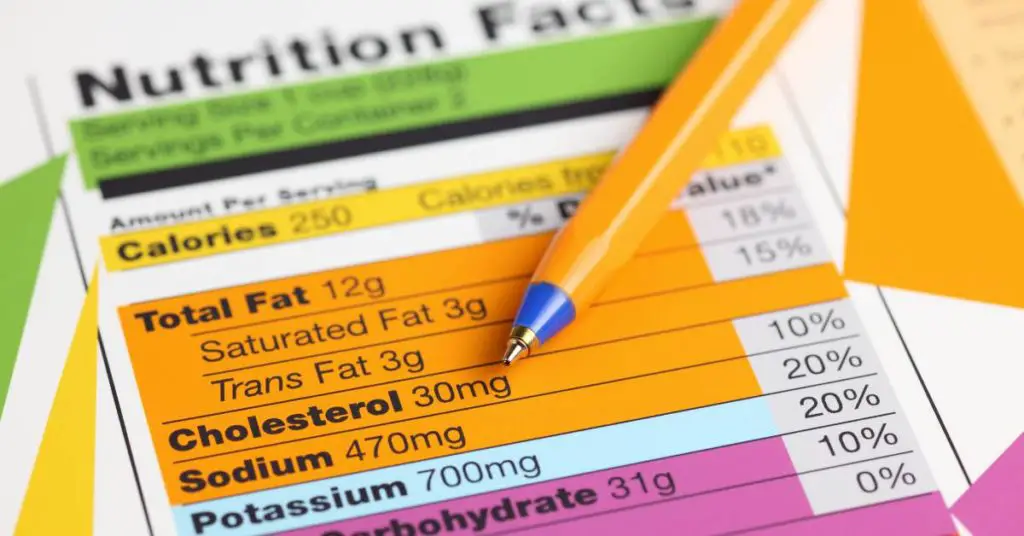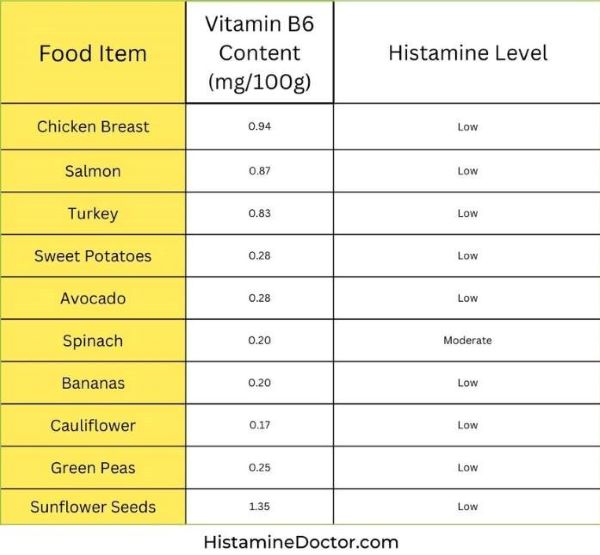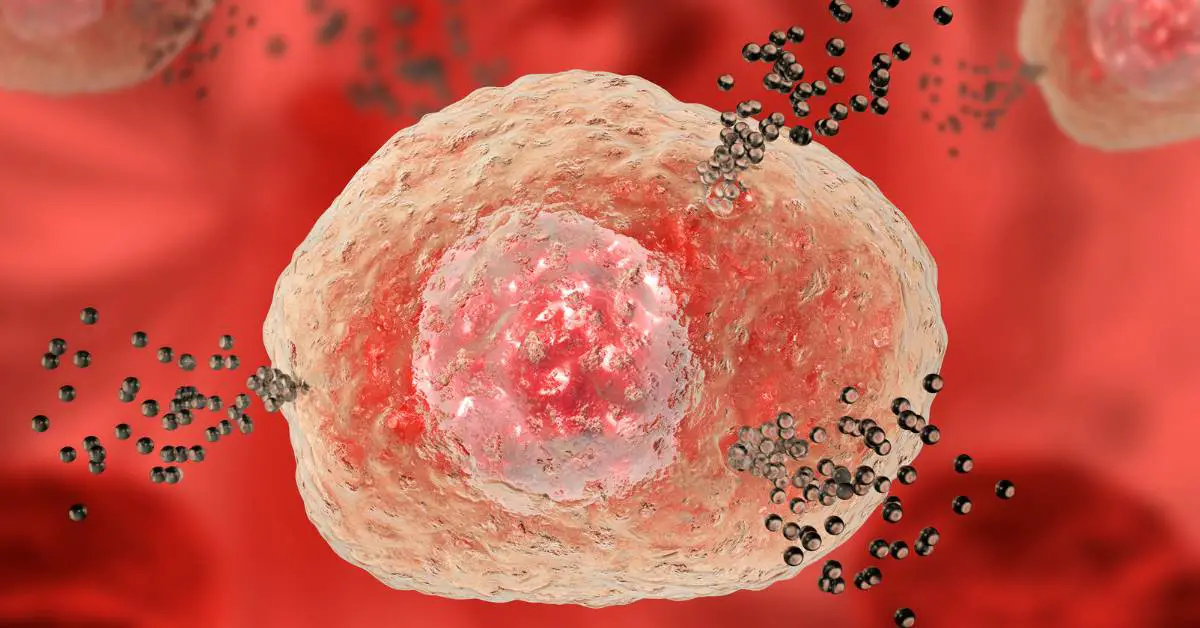If you have histamine intolerance, the prescription is to follow a low-histamine diet. By reducing your body’s histamine level, and not introducing outside sources of histamine, you can tame and even eliminate the symptoms of histamine intolerance.
However, a low-histamine diet isn’t a cure for histamine intolerance. It helps control the symptoms. But you must know what you’re eating and whether it’s high in histamine, and you should also be prepared for low-histamine diet side effects.
Despite the good that a low-histamine diet does for your health and well-being if you have histamine intolerance, it’s not all sunshine and rainbows. Following a diet low in histamine makes life more challenging Let’s delve into the nitty-gritty and explore whether this diet comes with any unwanted side effects. Buckle up!
The Composition of a Low-Histamine Diet
A low-histamine diet is made up of foods that contain little or no histamine. But that’s not all. You also must reduce or eliminate histamine liberators, foods that trigger your body’s mast cells to release histamine, a natural chemical that your body produces to deal with allergens and infections. (2)
If you have histamine intolerance, you have too much histamine in your system because you have less of an enzyme (diamine oxidase) that breaks it down. (1)
This blog covers many foods you can eat and what you should avoid with histamine intolerance. But to sum it up in a general way, you’ll need to avoid aged or fermented foods like cheese, wine, and sauerkraut. (3)
Additionally, processed, and cured meats, such as salami and bacon (4), should be off the menu. Shellfish, citrus fruits, tomatoes, and spinach can also be problematic for some individuals.
Also, be cautious with leftovers and be mindful of certain additives like food coloring and preservatives. It’s essential to work with a healthcare professional or registered dietitian to create a personalized low-histamine diet plan that suits your needs.
So, what about low histamine diet side effects?

Hunger Pangs: The Battle for Satisfaction
Depending upon the diet you’re accustomed to eating, eliminating a number of foods may cause you to feel hungry. For example, if you’re used to eating aged cheese and cured meats and you’re eliminating them due to their histamine content, you might not feel as satisfied.
Your taste buds might be yearning for those flavors, but remember, the low histamine diet is all about helping you feel better and reduce histamine intolerance symptoms, so it’ll ultimately be worth it.
The key is to find low-histamine substitutes you can enjoy instead.
For example, if you love hard, aged cheese, such as cheddar or Swiss cheese, you can eat lower-histamine cheese in moderation. This includes fresh cheeses, such as mozzarella, cottage cheese, and ricotta, which are generally considered lower in histamine. (5)
It’s not about depriving yourself; it’s about finding alternatives that will better serve you. So, if some of your favorite foods are high in histamine, think about lower histamine options you can eat instead.
Nutritional Gaps: The Quest for Balance
Another potential low-histamine diet side effect is the problem of nutritional gaps.
When you restrict your diet and avoid certain food groups, you run the risk of missing out on essential nutrients. It’s like walking on a tightrope without a safety net. You might find yourself needing to take supplements or carefully plan your meals to ensure you’re getting the right balance of vitamins and minerals.
Some vitamins, in particular, are important in the setting of histamine intolerance. Vitamin B6 is a key component of diamine oxidase (DAO), the enzyme that breaks down histamine.
So, it’s important that you get enough in your diet. You also need adequate zinc to activate vitamin B6 and synthesize DAO.

Social Struggles: The Social Butterfly’s Dilemma
On a low-histamine diet, there’s also social struggles. Picture this: you’re out with your friends, having a good time at a fancy restaurant. But wait, the menu is full of high-histamine dishes that are a big no-no for you!
Navigating social situations and finding histamine-friendly options can be a real challenge. You might feel left out or restricted when it comes to enjoying meals with your loved ones.
We’ll dig deeper into navigating heating out with histamine intolerance in a later article. But, for now, here are some tips:
Here are some tips for eating out with histamine intolerance:
- Look at menus online in advance to see if there are any low-histamine options available.
- Ask for substitutions or modifications to dishes to make them low-histamine
- Plan in advance and research restaurants that have low-histamine options.
- Look at sides and starters, as they may have more low-histamine options than main dishes.
- Look at vegan and vegetarian options, as they may be lower in histamine. But be aware that some vegetables and fruits are high in histamine.
- Avoid foods high in histamine, such as aged cheeses, cured meats, and fermented foods.
- Bring your own low-histamine snacks to eat if there are no suitable options available.
- Choose simple dishes that are less likely to contain high-histamine ingredients.
- Speak to the waiter or chef to ask about the ingredients in dishes and about their preparation.
- Find friends with similar dietary habits or cook for your friends to ensure that the food is low-histamine
Problems Maintaining Your Weight
When you start eliminating high-histamine foods from your diet, you may be able to loosen your belt a notch or two. For some people who struggle to lose weight, this is a positive. But for those who struggle to keep weight on, it can be an unwanted side effect of a low-histamine diet.
If you’re losing weight and you can’t afford to lose on a low-histamine diet, it’s best to talk to a dietitian who can design a plan for you that allows you to eat low-histamine while still getting enough calories in your diet to maintain your weight.
The Necessity of Scrutinizing Labels
Another side effect of a low-histamine diet is the need to read labels carefully to avoid hidden sources of histamine. When you’re on a low-histamine diet, you need to become the histamine police yourself. This means scrutinizing every food label, understanding ingredients, and being cautious about what you consume. This constant vigilance can be tiresome and restricting, but hey, it’s all in the name of keeping those histamine levels in check.
Low Histamine Diet Side Effects: The Takeaway
So, there you have it! The low histamine diet may be a game-changer for those with histamine intolerance, but it’s not without its fair share of side effects. From battling hunger pangs to social struggles, this diet isn’t a walk in the park.
It’s important to weigh the pros and cons, but if you have histamine intolerance, the pros outweigh the cons. If you jump on the low histamine bandwagon, consult with a healthcare professional who can guide you on your journey.
Good luck, and may the histamine force be with you! Also, find out what to expect when you start a low-histamine diet and whether histamine intolerance is hereditary.
References:
- Hrubisko M, Danis R, Huorka M, Wawruch M. Histamine Intolerance-The More We Know the Less We Know. A Review. Nutrients. 2021 Jun 29;13(7):2228. doi: 10.3390/nu13072228. PMID: 34209583; PMCID: PMC8308327.
- Sánchez-Pérez S, Comas-Basté O, Veciana-Nogués MT, Latorre-Moratalla ML, Vidal-Carou MC. Low-Histamine Diets: Is the Exclusion of Foods Justified by Their Histamine Content? Nutrients. 2021 Apr 21;13(5):1395. doi: 10.3390/nu13051395. PMID: 33919293; PMCID: PMC8143338.
- Histamine and histamine intolerance/ Laura Maintz, Natalija Novak. The American Journal of Clinical Nutrition, Volume 85, Issue 5, May 2007, Pages 1185–1196, https://doi.org/10.1093/ajcn/85.5.1185.
- Michalski M, Pawul-Gruba M, Madejska A. Histamine Contents in Raw Long-ripening Meat Products Commercially Available in Poland. J Vet Res. 2021 Nov 29;65(4):477-481. doi: 10.2478/jvetres-2021-0062. PMID: 35112002; PMCID: PMC8775731.
- “Focus on histamine production during cheese manufacture and … – PubMed.” https://pubmed.ncbi.nlm.nih.gov/37058863/.


